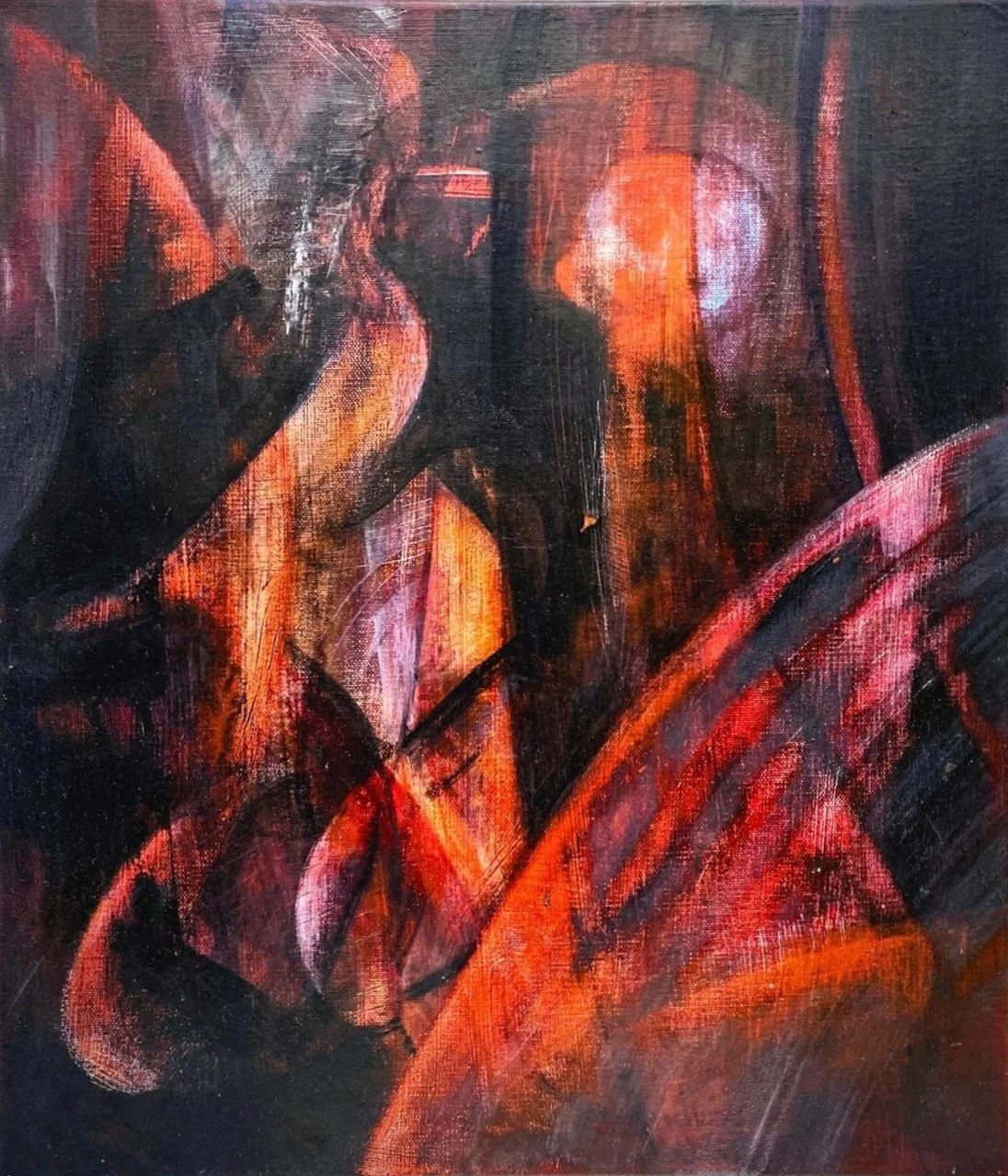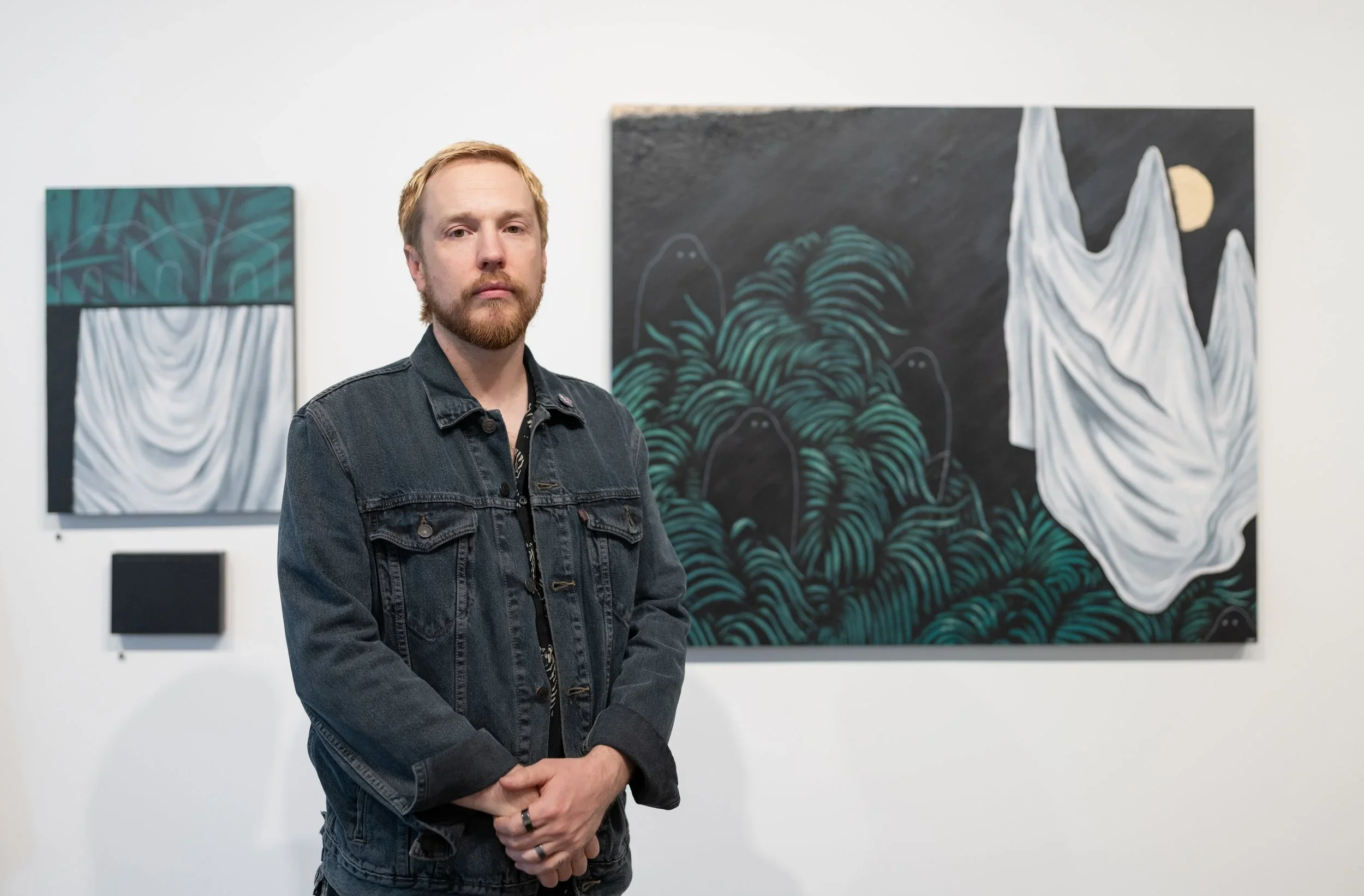10 Questions with Ayana Hanbich Lee
Ayana Hanbich Lee is an emerging abstract painter based in Seoul. Born in South Korea and taught at Cooper Union for the Advancement of Science and Art in NYC. Lee's artworks have been awarded internationally and exhibited at international galleries and museums, including the U.S., the U.K., South Korea, and China. She spent her teenage and early twenties in the United States, which caused her to incorporate the spectrum in Art. Her artwork has been shown in several media outlets, including articles and televised through K-drama. Her recent solo show was held in Seoul.
In Lee's earlier works, she embedded the roots of her hair in the painting process to mark the presentness. Later on, the paper took that place instead as an endeavor to deliver the currentness, the current state.
The feature of the paper, the flexibility in formal variation, made it easy to deliver instancy and immediate projection of the state of a thing or herself. She wanted to entangle material more personally, so she studied paper-making techniques so that she could be more in control of the deliverance through the material.
Considering the traditional hallmark of Painting, Lee attempts to juxtapose the other forms of art and implants those in painting. Questioning herself, "Within the canvas, how can the several temporal moments be captured? And how can I deliver the sequential order in a communicative form? In other words, how can the collision of time be seated in one space in the most respectful of their presences, in the order and still as "one unit".
Ayana Hanbich Lee - Portrait
Lee's past focus on encapsulating ephemerality, the "fragile beings in time," is shifted and reconstructed to a new chapter, colliding "fragile moments". Lee intends the layers (upholding the different times) to be read as scene after scene, per se 'as cinematic'. And also the layer to work as a page of a book, which kindly guides a way to engage.
In her painting, the arrays of abstraction forms empower the visional flow. The brush strokes, tones in color, and etching marks take narratives. Then, the weaves occur at some point; it is to open the conversation in the context of the order, which can be discussed by following the order of the creation or by following the intentional twist in the weave. She desires audiences to visually disassemble, assemble, and make it into their creative works. Those interactions are welcome and open to untie the weaves.
To accomplish Lee's ideology, she had to emphasize the existence of previous layers. Unfortunately, however, covering the surface is what painting does. Layering will ultimately deduct the space to work on, and it would be unable to show how it proceeded. To avoid that, Lee explored many ways and searched for the execution. Dis-piling the adhered papers, and painting in the leanest way to avoid the full covering, but those were still containing the limitation. Beyond many methodologies she tried, her breakthrough was by the 'EFFACE'; The re-awakening of the previous event.
This way, the first sequence, scene, chapter, page, sentence, and more so, the first alphabet of the word can be revealed at the end. The concealed parts will re-awake, so the different periods could end up being in one ground. The genuine beauty of effacing is that the most frontal and the most behind layer can actively associate to influence whichever's current and even to the moment of the person who's observing.
Tangerine Pizzicato, Acrylic on canvas, 2023 © Ayana Hanbich Lee
INTERVIEW
Can you tell us about your journey as an abstract painter, particularly growing up in the US with Korean heritage? How has your background influenced your artistic style?
I grew up in Seoul, Korea, but spent the majority of my twenties in the United States. Initially, I engaged in still-life and figurative painting during my art studies, but my path evolved toward abstraction while I was in New York City. My experiences with multiculturalism profoundly shaped my perspective, and I actively seek opportunities to deepen my understanding of art through diverse viewpoints.
Your artwork has been featured in various media outlets, including articles and K-dramas. How do you feel about the visibility and exposure your work has received through these platforms?
I regard it as a great privilege that my artwork has been featured in the media. After my artworks were featured in a K-drama, I held a solo show and saw numerous fans engaging with my work. This experience illuminated the potential for the media to forge new connections with diverse audiences.
Wilti Walu, Acrylic on Wood, 2024 © Ayana Hanbich Lee
How do you approach the process of creating abstract art? What inspires you and drives your creative process?
My abstraction is about capturing sequences. The interplay of translucency and collage elements creates layers that represent the dimensions of time, offering glimpses into the chronology of creation. The act of effacing, etching, carving, and peeling allows past layers to emerge, which all reveal the traces of the past. Each painting serves as a documentation;containing time.
I deal with the transition, transformation, shifting perspectives, or progress of its development. Overall, it evolves organically, and I delve into each moment as part of the pillars of the building, not as the steel bars that need to be buried.
Abstract art often invites interpretation from viewers. How do you feel about the different meanings and perceptions that people may derive from your work?
I welcome diverse interpretations as they enrich the viewer's experience. I encourage observers to follow the chronological interactions of scenes within the painting. By nature, the painting has reversible relationships. The eyes can trace the path from the forefront to the most aged touch on a canvas. If someone gazes long enough, they may begin toexperience it as a time-based work. I invite people to view my paintings from different angles as they reveal more of their history.
Bloo Till Night, Acrylic on canvas, 2023 © Ayana Hanbich Lee
OOlda 4, Acrylic with collage elements on wood panel, 2023 © Ayana Hanbich Lee
Ultimately, what would you like the viewers to experience when confronting your art? What messages or emotions would you like to convey?
I believe painting is more than just a singular image, one scene, one thing, one form, or one moment, especially abstract paintings. Painting can provide a dimensional experience, not simply an illusion. By following the order of the sequences, viewers will fully appreciate much like the other forms of Art such as Film, Creative Writing and play. Without reading the book from page one, what would it mean to read only the last sentence of the book?
I hope my artwork can offer indefinable things, the mush, without knowing how exactly to state, but to last in them for good.
As someone with a multicultural background, do you find that your artwork bridges or reflects elements of both Korean and American culture? If so, could you elaborate on these influences?
Having moved between cultures, my identity and artistic experiences are intertwined. It can be challenging to pinpoint where I belong, yet I find comfort in this ambiguity. At this juncture in my life, cultural connotations became quieter in my work. While they shaped my early artistic development, I now focus on evolving my practice beyond myself.
Can you share any specific experiences or moments that have significantly impacted your artistic journey or influenced your artistic style?
Throughout my exploration of art, I attended a traditional college and then took a gap year to step away from academia. Later in life, I joined Cooper Union for the Advancement of Science and Art, which is the college from which I graduated, which strongly emphasizes critical thinking and interdisciplinary study. Overall experiences in metropolitan environments exposed me to diverse artistic philosophies and historical contexts, all that compound experiences shaped my artworks and it all became an answer for me.
Day Ne, Acrylic on Wood panel, 2023 © Ayana Hanbich Lee
Are there any particular artists or movements that have inspired or influenced your work?
I find continuous inspiration in Fauvism and German Expressionism. The vibrant energy in their strokes, colors, and gestural marks captivates me. In my earlier years, I often visited MoMA specifically to engage with the works of artists like Ernst Ludwig Kirchner. While my style may not directly reflect theirs, I feel that I will revisit those influences as my practice evolves.
In what ways do you see your artwork evolving in the future? Are there any new themes or techniques you're interested in exploring?
Within the two-dimensional perimeter, I want to formalize my vocabulary to communicate the order in paintings and the ways to engage directly. For a period of time, I will continue exploring the theme of chronology and time encapsulation.
Finally, what are you working on now? Do you have any new projects or series you would like to share with our readers?
Currently, my works are exhibited at the CICA Museum in Korea, and I have a group exhibition scheduled in NYC at the end of the year. My creative practice is not confined to painting alone, and I frequently update my new works and exhibition information on Instagram @ayanalee.art.
Artist’s Talk
Al-Tiba9 Interviews is a promotional platform for artists to articulate their vision and engage them with our diverse readership through a published art dialogue. The artists are interviewed by Mohamed Benhadj, the founder & curator of Al-Tiba9, to highlight their artistic careers and introduce them to the international contemporary art scene across our vast network of museums, galleries, art professionals, art dealers, collectors, and art lovers across the globe.





















